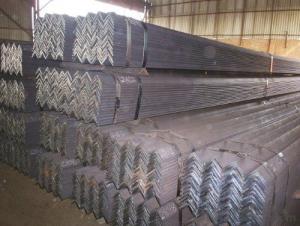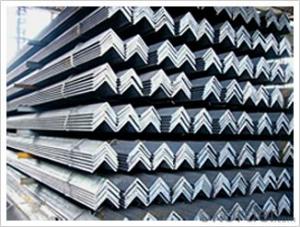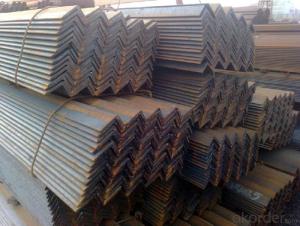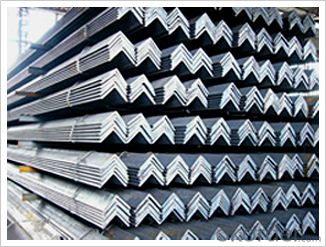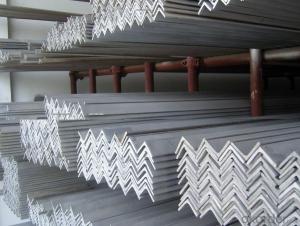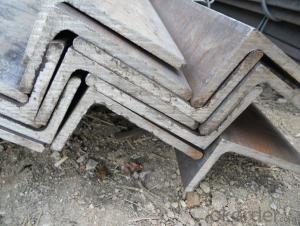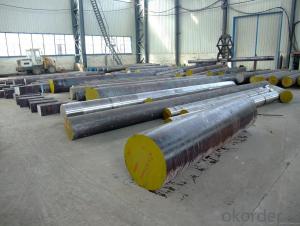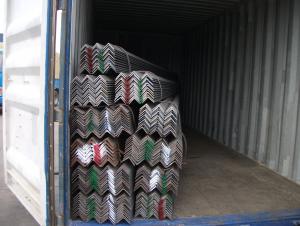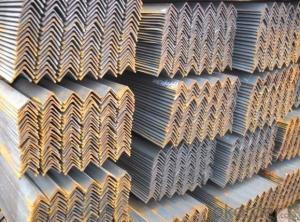Angel steel for construction about JIS SS400
- Loading Port:
- Tianjin
- Payment Terms:
- TT OR LC
- Min Order Qty:
- 25 m.t.
- Supply Capability:
- 10000 m.t./month
OKorder Service Pledge
OKorder Financial Service
You Might Also Like
Product Description:
Angle Steel Details:
| Minimum Order Quantity: | 25mts | Unit: | m.t. | Loading Port: | China Main Port |
| Supply Ability: | 80000-100000MTS/YEAR | Payment Terms: | TT or LC |
Product Description:
Specifications of JIS SS400 Angle Steel
1.Standards:GB,ASTM,BS,AISI,DIN,JIS
2.Invoicing on theoretical weight or actual weight as customer request
3.Material: JIS G3192,SS400;SS540.
4. Payment terms:
1).100% irrevocable L/C at sight.
2).30% T/T prepaid and the balance against the copy of B/L.
3).30% T/T prepaid and the balance against L/C
5.Sizes:

EQUAL ANGLES SIZES |
| ||
a(mm) | a1(mm) | thickness(mm) | length |
25 | 25 | 2.5---3.0 | 6M/12M |
30 | 30 | 2.5---4.0 | 6M/12M |
38 | 38 | 2.5 | 6M/12M |
38 | 38 | 3.0---5.0 | 6M/12M |
40 | 40 | 3.0---6.0 | 6M/12M |
50 | 50 | 3 | 6M/12M |
50 | 50 | 3.7---6.0 | 6M/9M/12M |
60 | 60 | 5.0---6.0 | 6M/9M/12M |
63 | 63 | 6.0---8.0 | 6M/9M/12M |
65 | 65 | 5.0---8.0 | 6M/9M/12M |
70 | 70 | 6.0---7.0 | 6M/9M/12M |
75 | 75 | 5.0---10.0 | 6M/9M/12M |
80 | 80 | 6.0---10.0 | 6M/9M/12M |
90 | 90 | 6.0---10.0 | 6M/9M/12M |
100 | 100 | 6.0---12.0 | 6M/9M/12M |
120 | 120 | 8.0-12.0 | 6M/9M/12M |
125 | 125 | 8.0---12.0 | 6M/9M/12M |
130 | 130 | 9.0-12.0 | 6M/9M/12M |
140 | 140 | 10.0-16.0 | 6M/9M/12M |
150 | 150 | 10---15 | 6M/9M/12M |
160 | 160 | 10---16 | 6M/9M/12M |
180 | 180 | 12---18 | 6M/9M/12M |
200 | 200 | 14---20 | 6M/9M/12M |
5. Material Specifications:
Grade | Yield Strength,N/mm² | Extension Strength N/mm² | |||
Thickness of Steel,mm | |||||
≦16 | >16-≦40 | >40-≦100 | >100 | ||
SS330 | ≧205 | ≧195 | ≧175 | ≧165 | 330-430 |
SS400 | ≧245 | ≧235 | ≧215 | ≧205 | 400-510 |
SS490 | ≧285 | ≧275 | ≧255 | ≧245 | 490-610 |
SS540 | ≧400 | ≧390 | - | - | ≧540 |
Usage & Applications Angle Steel
Trusses;
Transmission towers;
Telecommunication towers;
Bracing for general structures;
Stiffeners in structural use.
Packaging & Delivery of Angle Steel
1. Transportation: the goods are delivered by truck from mill to loading port, the maximum quantity can be loaded is around 40MTs by each truck. If the order quantity cannot reach the full truck loaded, the transportation cost per ton will be little higher than full load.
2. With bundles and load in 20 feet/40 feet container, or by bulk cargo, also we could do as customer's request.
3. Marks:
Color mark: There will be color marking on both end of the bundle for the cargo delivered by bulk vessel. That makes it easily to distinguish at the destination port.
Tag mark: There will be tag mark tied up on the bundles. The information usually including supplier logo and name, product name, made in China, shipping marks and other information request by the customer.
If loading by container the marking is not needed, but we will prepare it as customer request.
Production flow of Angle Steel
Material prepare (billet) —heat up—rough rolling—precision rolling—cooling—packing—storage and transportation
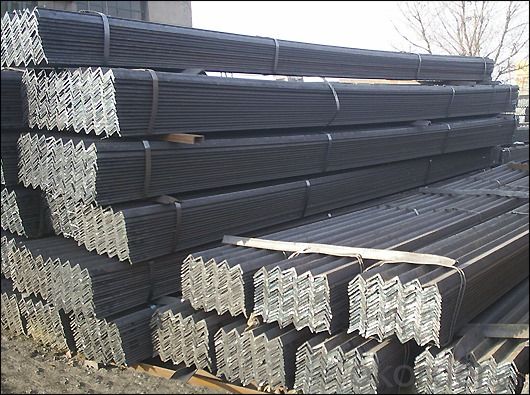
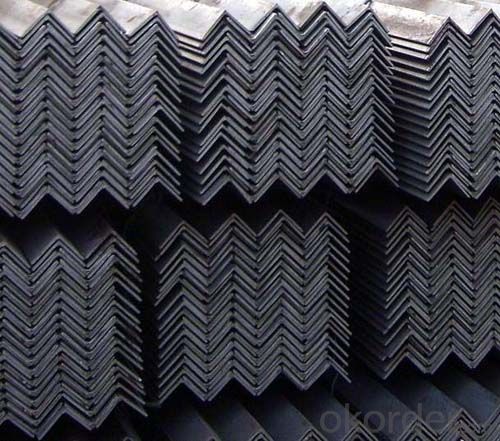
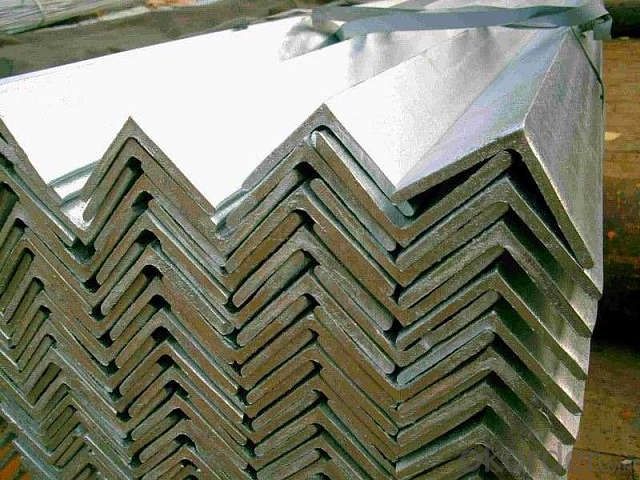
- Q: What are the different methods for cleaning steel angles?
- There are several methods for cleaning steel angles, including using solvents or degreasers to remove dirt and grease, scrubbing with a wire brush or abrasive pad to remove rust or corrosion, and using specialized cleaning agents or acid solutions for more stubborn stains or buildup. Additionally, power washing or sandblasting can be used to effectively clean larger steel angles.
- Q: Can steel angles be used as supports for beams or columns?
- Steel angles serve as suitable support for beams or columns. These L-shaped steel members find extensive usage in construction and engineering ventures. Their strength and stability make them particularly ideal for supporting beams or columns. Steel angles effectively provide structural support by transferring the load from the beams or columns to the foundation or other structural components. They often act as brackets or braces, reinforcing the beams or columns and preventing any buckling or bending when exposed to heavy loads. The adaptability of steel angles allows for easy welding, bolting, or connection to the beams or columns. They can be tailored to fit specific project requirements, granting flexibility in design and construction. Moreover, steel angles possess durability and corrosion resistance, rendering them suitable for both indoor and outdoor applications. They offer various dimensions and thicknesses, enabling engineers and architects to select the appropriate angle measurements based on the load and span of the beams or columns. Overall, steel angles present a dependable and cost-effective option for supporting beams or columns in construction projects. They offer strength, stability, and versatility.
- Q: How do you determine the required thickness of a steel angle for a specific load?
- To determine the required thickness of a steel angle for a specific load, several factors need to be considered. Firstly, the load that will be applied to the steel angle must be determined. This can be done by analyzing the structural design or the intended purpose of the steel angle. The load can be in the form of a static load, such as the weight of a structure, or a dynamic load, such as the force exerted by moving objects or wind. Once the load is known, the next step is to calculate the bending moment and shear force that will be experienced by the steel angle. The bending moment is the measure of the bending or flexing of the steel angle under the applied load, while the shear force is the measure of the internal forces that act parallel to the cross-sectional area. The bending moment and shear force calculations are typically performed using engineering principles and formulas, such as the moment of inertia and the maximum stress formula. These calculations take into account the dimensions of the steel angle, the applied load, and the properties of the steel material. Once the bending moment and shear force are determined, the required thickness of the steel angle can be calculated. This calculation involves selecting a suitable safety factor, which is used to account for uncertainties and potential variations in the applied load or the strength of the steel material. The safety factor is usually determined by industry standards or codes. The required thickness can then be calculated using the maximum stress formula, which relates the bending moment, shear force, and the dimensions of the steel angle to the stress experienced by the material. By rearranging the formula, the required thickness can be solved for, ensuring that the steel angle is strong enough to resist the applied load without failing or deforming. In summary, determining the required thickness of a steel angle for a specific load involves analyzing the load, calculating the bending moment and shear force, selecting a safety factor, and using the maximum stress formula to solve for the required thickness. It is important to consult engineering principles, codes, and standards to ensure that the steel angle is appropriately sized to withstand the applied load.
- Q: Are there any environmental concerns associated with steel angles?
- Yes, there are several environmental concerns associated with steel angles. One of the main concerns is the production process of steel angles, which involves the extraction of iron ore, coal mining for coke production, and the emission of greenhouse gases during the steelmaking process. These activities contribute to deforestation, air pollution, and climate change. Additionally, the disposal of steel angles at the end of their life cycle can be problematic. Steel is not biodegradable and can take hundreds of years to decompose in landfills. Improper disposal of steel angles can lead to soil and water contamination, posing a risk to ecosystems and human health. Furthermore, the transportation of steel angles from production facilities to construction sites can contribute to carbon emissions and air pollution. The energy required for transportation increases the overall environmental impact of steel angles. To mitigate these environmental concerns, there are several strategies that can be adopted. Firstly, using recycled steel instead of virgin steel can significantly reduce the environmental footprint of steel angles. Additionally, implementing energy-efficient technologies in the steel production process can help minimize greenhouse gas emissions. Finally, responsible disposal and recycling of steel angles at the end of their life cycle can help reduce the environmental impact.
- Q: Do steel angles have a smooth or textured surface?
- Steel angles typically have a textured surface due to the manufacturing process, which involves rolling or bending steel sheets.
- Q: 6# specification for angle iron
- The angle iron can be made up of different force components according to the different structure, and can also be used as the connecting piece between the components. It is widely used in various architectural and engineering structures, such as beams, bridges, towers, hoisting and conveying machinery, ships, industrial furnace, reaction tower, container rack and warehouse shelves.
- Q: Can steel angles be used in seismic or earthquake-resistant construction?
- Seismic or earthquake-resistant construction can indeed make use of steel angles. These angles are commonly employed in structural applications due to their ability to provide strength and stability to a building. The main objective in seismic construction is to create structures capable of withstanding the powerful forces unleashed by an earthquake. Steel angles can be utilized in various ways to enhance a structure's resistance to seismic activity. One common application involves using them as bracing elements. These bracing systems help distribute the seismic forces throughout the building, reducing the risk of collapse. Steel angles can be employed as diagonal bracing members, adding strength and rigidity to the structure. Furthermore, steel angles can serve as moment-resisting frames in seismic design. These frames are designed to dissipate and absorb the energy generated during an earthquake. By incorporating steel angles into the frame, the building can effectively counteract lateral forces and maintain stability during seismic events. Moreover, steel angles are crucial in the construction of steel moment frames, which are widely used in seismic design. These frames consist of steel columns and beams connected by steel angles or other connections capable of resisting earthquake-induced forces. Steel angles play a vital role in transferring forces between different frame members, ensuring overall stability and structural integrity. In conclusion, steel angles can be effectively utilized in seismic or earthquake-resistant construction. Their strength and versatility make them suitable for bracing systems, moment-resisting frames, and steel moment frames, all of which contribute to enhancing a structure's seismic resistance. However, it is essential to ensure that the design and installation of steel angles comply with relevant building codes and regulations to guarantee the safety and durability of the construction.
- Q: What is the maximum deflection for a steel angle beam?
- The maximum deflection for a steel angle beam depends on several factors including the dimensions of the beam, the material properties of the steel, and the applied load. It is calculated using engineering principles and can be determined using formulas and calculations specific to the beam's geometry and loading conditions. Therefore, without specific information about these factors, it is not possible to provide a definitive answer to the maximum deflection of a steel angle beam.
- Q: Can steel angles be used for support brackets?
- Yes, steel angles can be used for support brackets. Steel angles are commonly used in construction and engineering applications due to their strength and versatility. They have a triangular shape with equal sides and can be easily fastened to walls, beams, or other structures to provide support. Steel angles are frequently used as support brackets for shelving, countertops, and other heavy items. They are capable of bearing significant loads and provide stability and durability to the supported structure.
- Q: What is the cost of steel angles compared to other structural materials?
- Various factors, such as market conditions, availability, and specific requirements, can cause the cost of steel angles to vary in comparison to other structural materials. However, as a rule, steel angles are often seen as a cost-effective choice for structural applications. When compared to materials like concrete or timber, steel angles are generally considered more affordable due to their relatively low production costs. Steel is readily available, and advancements in production techniques have resulted in competitive pricing. Furthermore, steel angles offer an exceptional strength-to-weight ratio, enabling lighter and more cost-efficient structural designs. Compared to other metals like aluminum or stainless steel, steel angles are typically more cost-effective. While aluminum and stainless steel may have certain advantages in terms of corrosion resistance or aesthetic appeal, their production processes and material properties tend to make them more expensive. It is worth noting that the exact cost of steel angles can vary depending on specific dimensions, quality, and quantity requirements. Prices may also fluctuate due to market conditions, such as changes in raw material costs or global supply and demand dynamics. Therefore, it is advisable to consult suppliers or industry professionals for accurate and up-to-date pricing information for steel angles.
Send your message to us
Angel steel for construction about JIS SS400
- Loading Port:
- Tianjin
- Payment Terms:
- TT OR LC
- Min Order Qty:
- 25 m.t.
- Supply Capability:
- 10000 m.t./month
OKorder Service Pledge
OKorder Financial Service
Similar products
Hot products
Hot Searches
Related keywords
